Every year we kind of forget about our crop of Jerusalem artichokes. They blossom in the summer, with the flowers looking like sunflowers. Then the flowers fade, the stalks dry out, and we make a mental note to dig up the roots in the fall.
I’m not quite sure where we file that mental note, but it never seems to make it to the inbox of our brains.
Late as always, Domenico came back from Todi last week ago with one of the biggest crops of Jerusalem artichokes we’ve ever had. I think it was at least 4 kilos. That’s a lot of Jerusalem artichokes. I guess the same weirdly wet weather this past spring and summer that accounted for the horrible olive harvest was good news for these babies. They were not only plentiful, but big, full and extra flavorful.
After having made a few batches of my go to soup and gratin, I decided to branch out and try something new. First of all, after a bit of research I realized that I didn’t really have to peel them. All these years I’d been struggling with their knobbly forms to try to peel them without totally destroying them. It turns out that the peel is very thin and once cooked, almost disappears. Who knew? I also decided to saute them directly in the pan, with no parboiling first. I’m not quite sure why I had always thought I had to do both these things, but eliminating these two steps not only made the whole thing a lot easier, but left the artichokes with an a very firm texture that I loved and an intensely nutty taste.
I meant to work on this recipe so that I could share with you in time for Thanksgiving. I thought it would be a perfect side dish: an alternative to the starches, but still stick-to-your-ribs enough to satisfy everyone. And so I decided to use lots of sage, which to me always epitomizes the holiday.
While I didn’t get my act together for this to accompany your turkey, I think it would be perfect as a side to any sort of roast meat. Christmas goose maybe?
jerusalem artichokes + sage
Prep
Cook
Total
Yield 4
Ingredients
- 1 pound / 1/2 kilo jerusalem artichokes
- 2 tablespoons olive oil
- 5 cloves of garlic, chopped
- 10 fresh sage leaves, chopped
- salt, pepper
- lemon juice
Instructions
- Wash the Jerusalem artichokes well. Since you aren’t peeling them, you may want to use a scrub brush to make sure they are clean of any dirt or grit. Dry them.
- Pour the olive oil into a pan large enough to hold all the artichokes. They don’t have to be in a single layer, but they shouldn’t be too piled up. Heat the oil on a low flame.
- Start to cut the artichokes into 1/4 slices. Since they oxidize when exposed to air, as you slice each one, immediately put it in the pan with the oil, and stir to coat. Continue with the rest of the artichokes, adding them to the pan and stirring.
- Once you have added all the artichokes, turn the heat up to medium and season with salt and pepper. Stir and continue cooking. If the artichokes start to brown, but are still too firm, add a quarter cup of water and stir again.
- Keep checking for doneness. You want them to be cooked through, but there is a fine line between cooked and mush, and its easy to go too far. Once they are just about done, add the chopped garlic and sage and continue cooking for another five minutes.
- Taste and adjust for seasoning, and add a squeeze or two of fresh lemon juice.
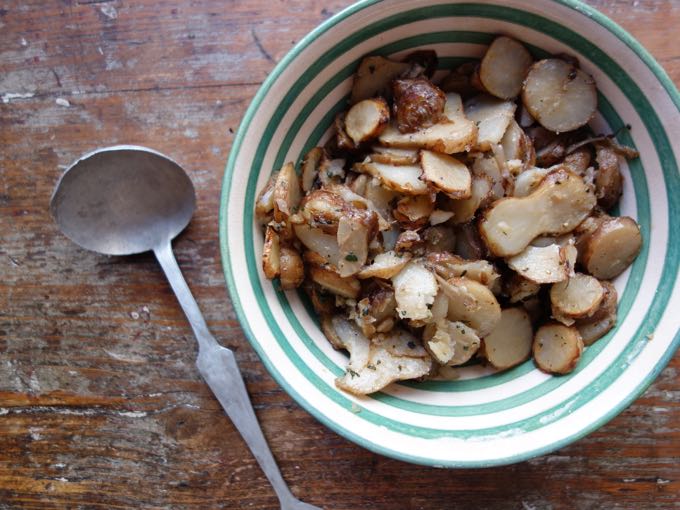
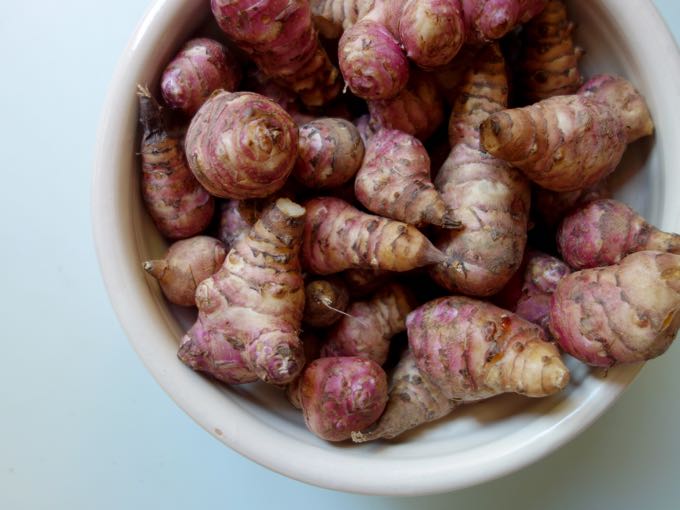
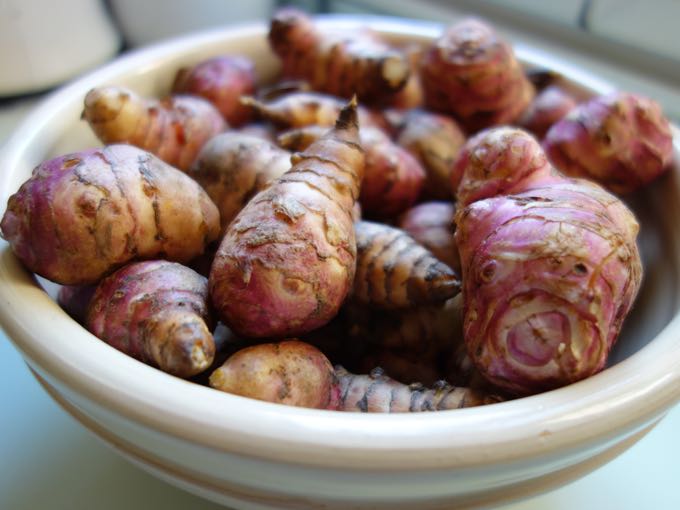
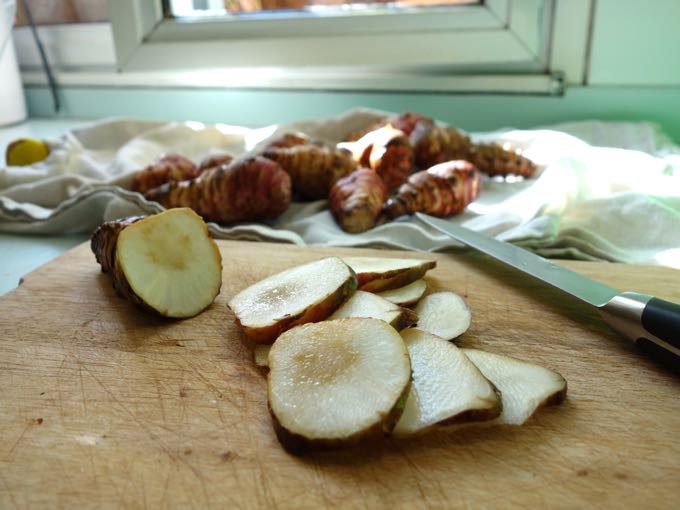
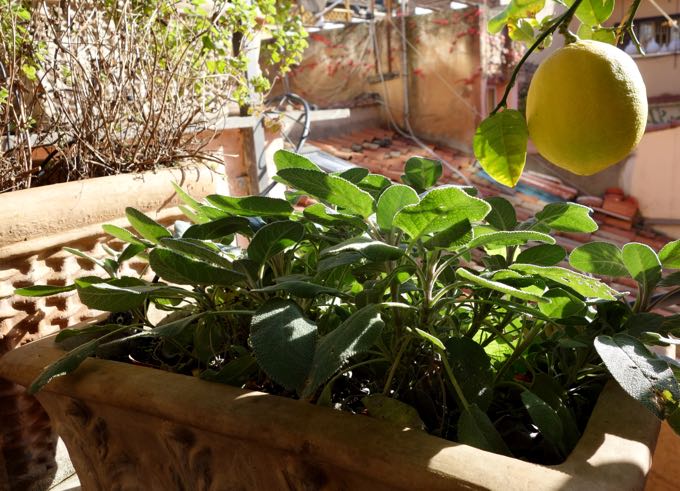
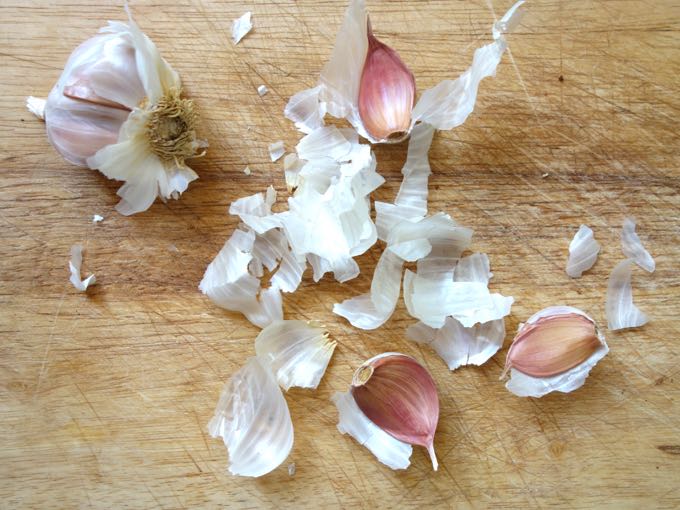
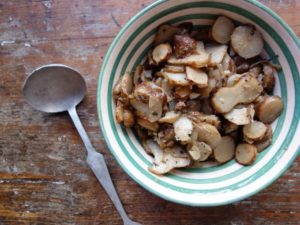
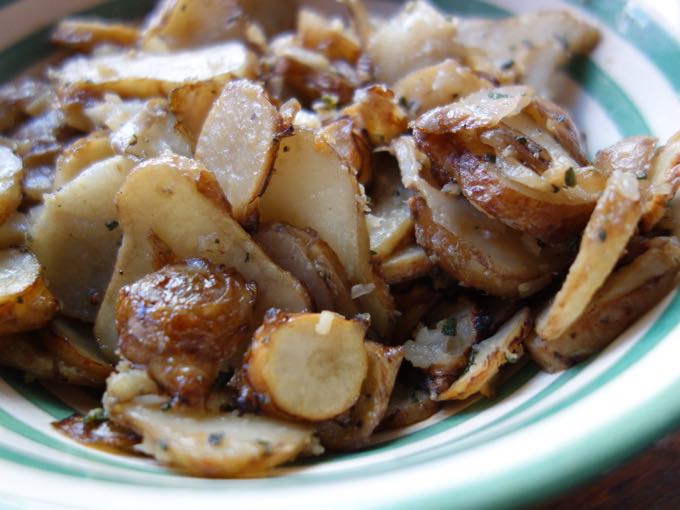
Who’da thunk it. Peeling is the worst part. Hurray for the non-peeling. I love these things but they’re hard to get here. Your recipe sounds delish. Thanks always.
Vancouver Barbara
I purchased these in New Jersey recently. I slice them and also fry with garlic, salt and pepper. At the end I sprinkle parmesan cheese on top. Absolutely delicious.
Cheese makes everything better.
I roast mine in the oven with rosemary and prepare a salsa verde or chimichurri sauce to dip them in after they come out of the hot oven! Delicious.
that sounds delicious!
In North Carolina they were used in a relish with a mustard base, then canned and distributed to friends. Eaten chilled, and it was delicious. I’ll try this recipe if I find them in Whole Food.
Really? I’ve never heard of them being used to make relish. Were they cooked first? Or just used and then canned raw?
I don’t know, but they were crisp like water chestnuts. I’ll ask and send you a recipe .